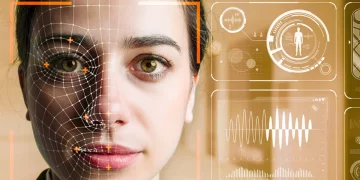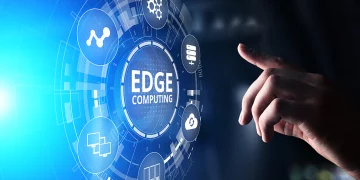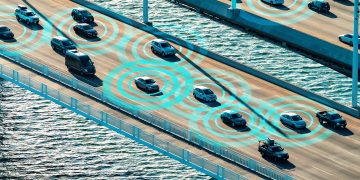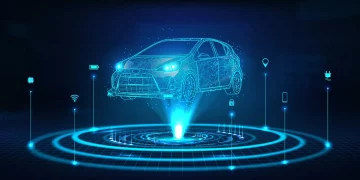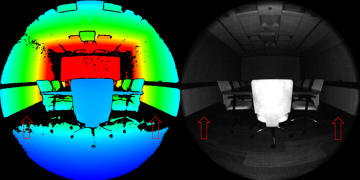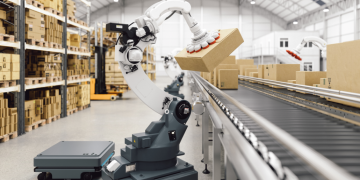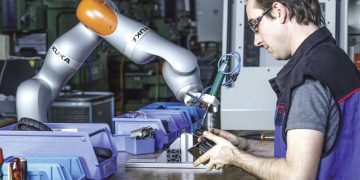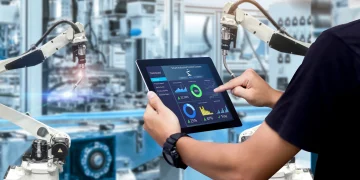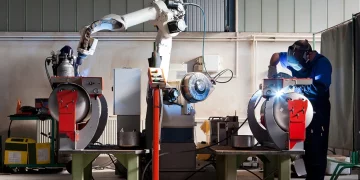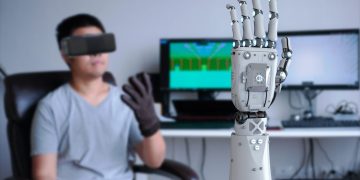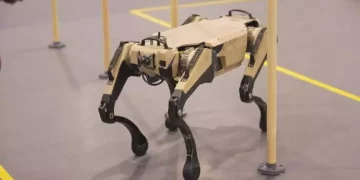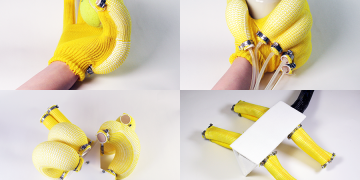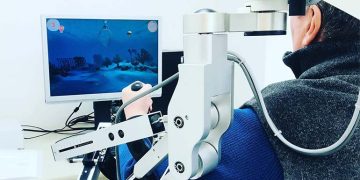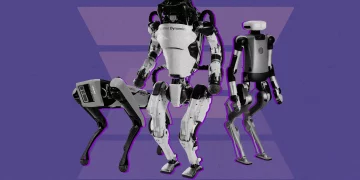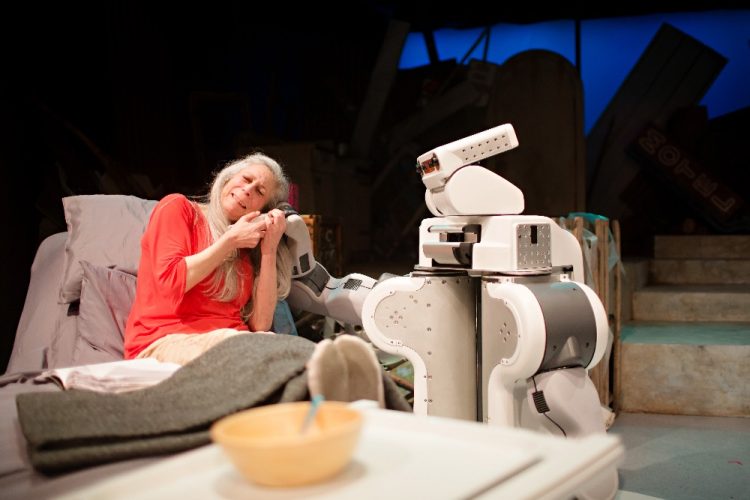As technology continues to advance at an unprecedented rate, we are witnessing a profound transformation in the way robots are integrated into our lives. What was once the realm of science fiction—machines functioning as assistants or colleagues—is now becoming a reality. Robots, empowered by artificial intelligence (AI), machine learning, and robotic process automation, are increasingly seen not merely as tools, but as valuable partners that can work alongside humans to enhance productivity, safety, and creativity across multiple industries.
This article delves into how robots will evolve from being passive, programmed machines to active collaborators in various sectors, exploring their potential roles in workplaces, healthcare, education, and beyond. We will also examine the challenges and opportunities this shift presents, considering the social, ethical, and economic implications of a future where robots are not just tools, but true partners in work and life.
1. Introduction: The Paradigm Shift in Human-Robot Relationships
For decades, robots have primarily been seen as tools designed to perform specific, repetitive tasks—often with minimal human interaction. Whether it’s an industrial robot assembling cars or a vacuum robot cleaning floors, these machines were developed to alleviate labor-intensive tasks but were limited in terms of their capacity to collaborate with humans.
However, as advancements in artificial intelligence and robotics continue to progress, the vision for the future of robotics is rapidly changing. Rather than simply performing predefined tasks, robots are now being developed to work alongside humans in more dynamic, adaptive, and collaborative roles. This evolution is not just about robots becoming more “human-like” in their abilities, but about how they can be partners—agents that actively contribute to human goals in complex and unpredictable environments.
This transformation is particularly significant in workplaces, where the boundaries between human labor and robotic assistance are becoming increasingly blurred. With robots capable of learning, adapting, and responding to changing environments, we are entering an era where robots are no longer just “tools” but intelligent partners that enhance the capabilities of their human counterparts.
2. Human-Robot Collaboration: Shaping the Future of Work
The Rise of Collaborative Robots (Cobots)
In the workplace, robots are shifting from being isolated, standalone tools to becoming integrated, collaborative partners. These robots, known as collaborative robots or cobots, are designed to work side-by-side with human workers rather than replacing them.
Cobots are equipped with sensors, AI, and adaptive control systems that allow them to work safely alongside people. These robots can learn from human behavior, interpret contextual cues, and perform a wide range of tasks, from precision assembly to material handling. The collaboration between human and robot is not just about robots assisting with labor-intensive tasks; it’s about creating a synergistic relationship that maximizes the strengths of both parties.
- Enhancing Productivity: Cobots can take over repetitive, tedious tasks that humans find physically taxing or mundane, allowing workers to focus on more creative or complex problem-solving tasks. For instance, a human worker in a manufacturing plant might focus on designing a new product while the cobot handles the assembly line, ensuring a smoother production process.
- Improving Safety: Robots can also take on hazardous jobs, working in environments where human safety is at risk. In industries such as construction, mining, or toxic waste disposal, robots can perform high-risk activities like handling hazardous materials or performing inspections in dangerous areas, thus improving workplace safety.
- Personalized Assistance: In service industries like retail and hospitality, cobots will become customer-facing assistants. Imagine a robot that can help customers find items in a store or serve drinks at a bar. These robots, integrated with natural language processing (NLP) and AI, will personalize customer interactions, making the experience more efficient and pleasant.
Robots as Creative Collaborators
While the idea of robots performing manual labor is nothing new, their role as creative collaborators is emerging as one of the most exciting aspects of the future of work. In fields like art, design, and media, robots are increasingly being used to enhance human creativity rather than just automate tasks.
- Art and Design: AI-driven robots are already being used to create artworks, whether it’s robotic painters that mimic human styles or 3D printing robots that craft intricate designs. These robots offer artists and designers new tools for expressing creativity and pushing the boundaries of their craft.
- Music and Performing Arts: Robots are also entering the world of performance. Robotic musicians, dancers, and even actors are being developed, often in collaboration with human performers. These collaborations have the potential to redefine entertainment and give rise to new forms of art.
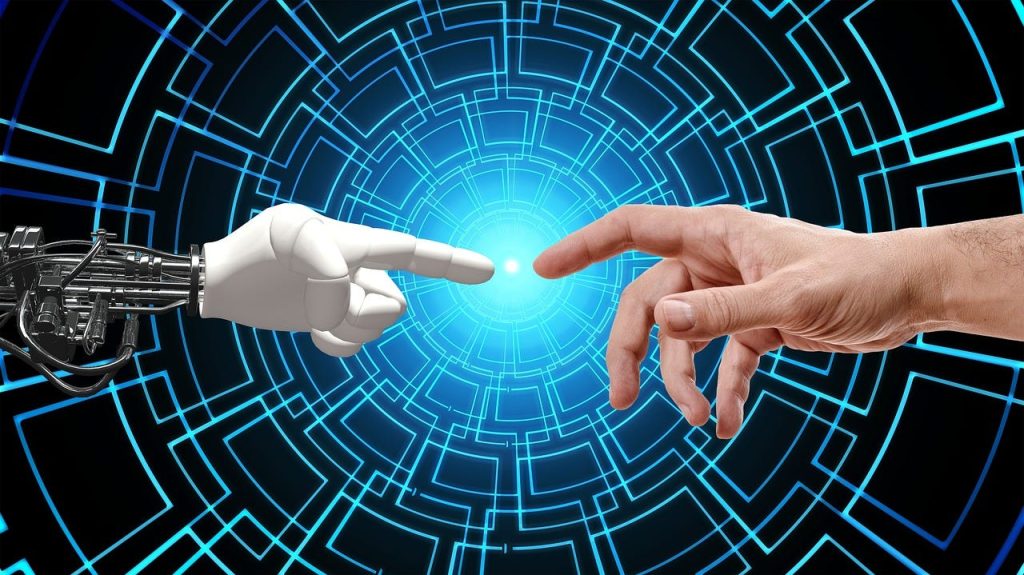
3. Robots in Healthcare: Revolutionizing Patient Care and Medical Research
One of the most profound areas where robots are transitioning from tools to partners is in healthcare. In this industry, robots are not simply performing routine tasks like dispensing medication or assisting in surgeries; they are actively contributing to improving patient care, advancing medical research, and even working directly with medical professionals.
Surgical Robots: Precision and Partnership
Surgical robots, such as the da Vinci Surgical System, are already being used in operating rooms to assist surgeons in performing delicate procedures with unmatched precision. These robots do not replace human surgeons but rather work alongside them, enhancing their capabilities and ensuring higher success rates.
- Precision in Surgery: These robots are equipped with AI-driven capabilities that can analyze data, provide real-time feedback, and optimize surgical paths. They enable surgeons to perform minimally invasive procedures with smaller incisions, faster recovery times, and reduced risks.
- Remote Surgeries: With robotic systems, surgeons can even perform operations remotely, allowing for telemedicine applications in underserved or remote areas. This opens up new possibilities for delivering high-quality medical care to patients who otherwise might not have access to expert care.
Robots in Patient Care and Assistance
Robots are also being used to provide direct assistance to patients, particularly in elderly care. Robotic companions can help monitor the health of senior citizens, assist with daily tasks, and even offer emotional support. By partnering with healthcare providers, these robots can ensure that patients receive timely care and attention while improving their overall well-being.
- Companion Robots: These robots use AI to understand and respond to human emotions, providing companionship and mental stimulation for patients suffering from conditions like dementia or loneliness. They can also remind patients to take their medication and assist with physical rehabilitation exercises.
- AI-Enhanced Diagnostics: Robots powered by AI and machine learning are revolutionizing diagnostics by quickly processing vast amounts of medical data, analyzing imaging results, and suggesting potential diagnoses. These systems can work with human doctors to provide more accurate and timely diagnoses, ensuring that patients receive the best possible care.
4. Robots and Education: Empowering the Next Generation
In education, robots are not just tools to teach programming or STEM subjects—they are becoming interactive partners that foster a deeper understanding of complex subjects and create personalized learning experiences for students.
Robots as Teaching Assistants
Educational robots are already being integrated into classrooms, where they assist teachers by providing hands-on learning experiences in subjects like robotics, coding, and engineering. These robots engage students with interactive lessons, helping to demystify technology and make learning more dynamic.
- Personalized Learning: Robots can tailor educational content to each student’s learning style and pace. AI algorithms allow these robots to assess a student’s strengths and weaknesses, adapting their teaching strategies accordingly to ensure that every student reaches their full potential.
- Encouraging STEM Careers: By working with robots in the classroom, students will develop critical thinking, problem-solving, and technical skills that are increasingly in demand in today’s workforce. Early exposure to robotics will inspire the next generation of engineers, scientists, and innovators.
Robots in Special Education
In special education, robots are providing valuable support for students with disabilities. These robots can assist with tasks such as communication, mobility, and emotional regulation, helping students engage more fully in the learning process.
- Assistive Robots: Robots equipped with AI and speech recognition can help students with physical or cognitive disabilities participate in learning activities and communicate more effectively with their peers and teachers.
5. The Ethical Considerations of Human-Robot Partnerships
As robots become more integrated into our daily lives and workplaces, it is essential to consider the ethical implications of this human-robot partnership. Questions around autonomy, job displacement, privacy, and social inequality will need to be addressed.
- Job Displacement: While robots can enhance productivity and efficiency, there are concerns about their potential to replace human workers in certain industries. How do we ensure that workers are not left behind in a world where robots can perform increasingly complex tasks?
- Autonomy and Control: As robots become more autonomous, ensuring that humans maintain control over their actions becomes a critical issue. How do we design robots that can collaborate with humans without overstepping boundaries or making unsupervised decisions?
- Ethical AI: The development of ethical AI systems is essential to ensuring that robots make decisions that are fair, transparent, and aligned with human values.
6. Conclusion: A New Era of Human-Robot Collaboration
The future of robotics is bright, not because robots will replace humans, but because robots will become true partners in every aspect of life. Whether in the workplace, healthcare, education, or entertainment, robots will enhance human capabilities and enrich our lives. As we navigate this new era of collaboration, it is essential that we foster a positive relationship between humans and robots, one that emphasizes cooperation, trust, and ethical considerations.
In the coming decades, we will witness a society where robots are no longer just tools or machines, but active, collaborative partners. By embracing this future, we can create a world where technology and humanity work together for the common good.






